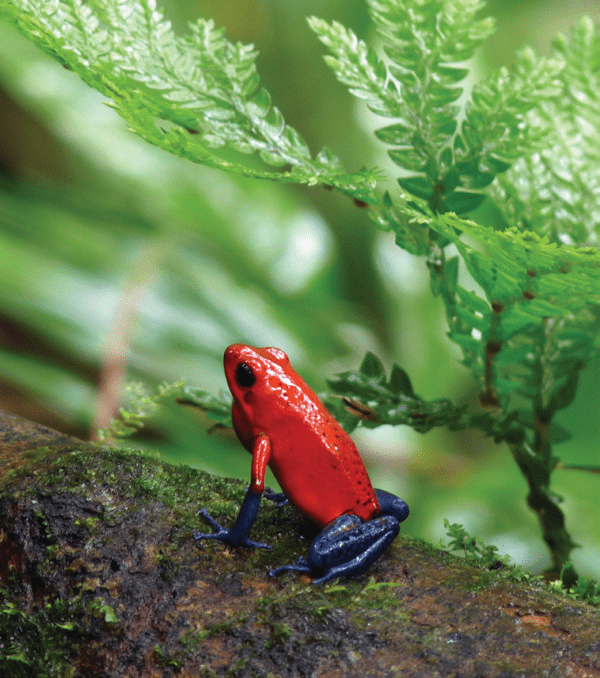In the 1970s and 1980s, deforestation was rampant in Costa Rica. Over half of the country’s forests had fallen to make way for cattle ranching.

Twenty years ago, thousands of hectares were still bare, but there was already a ray of hope. The government made it illegal to cut the forest without authorization and started paying for the “environmental services” the forest provides. Showing that a standing tree can generate more value than a cut one turned the tide.
Today, close to 60% of the land is once again forest, and the landscape is home to around half a million plant and animal species. This led to a boom in ecotourism that now provides $4 billion a year to the economy.
According to the World Bank, the pioneering Payments for Environmental Services (PES) program has been so successful that Costa Rica is the only tropical country in the world to have reversed deforestation.
In 2021, this effort earned Costa Rica the first Earthshot Prize in the category of Protect and Restore Nature. Besides the $2.6 million prize, the spot in the world’s limelight will help the country go a step further by taking this approach to urban areas.
With help, there is a chance that nature can thrive again. Indeed, 30% of the world’s land and oceans could be protected this way, too. That is why four countries have joined to create a new marine reserve as a corridor in the migratory route for species such as blue whales, humpback whales, hammerhead sharks, sea turtles, and others. It will link the marine-protected areas of Malpelo in Colombia, Coiba in Panama, Galapagos in Ecuador, and Cocos in Costa Rica.
Within the area, the Isla del Coco National Park in Costa Rica is one of the last and best-preserved coral reefs on the planet. Coral reefs are extremely important ecosystems, because about 25% of all marine life depends upon them at some stage in their life cycle.
Individuals can also give a hand. For example, the organization Coral Gardeners harvests, grows and plants resilient corals to restore dying reefs and bring life back to the ocean. It’s all based on “super corals” — corals that have proven to survive rising water temperatures and bleaching events in the ocean.
Coral Gardeners started in 2017 with a group of island kids in Mo’orea, the sister island of Tahiti in French Polynesia. They were witnessing the rapid degradation of the coral reef and decided to take action. Today, the small group includes scientists, engineers, creators, and advocates. To date, more than 15,000 corals have been replanted by the group.
“Save the Redwoods League” donated 523 acres of forestland in Northern California to the Intertribal Sinkyone Wilderness Council for lasting protection. Through this partnership, the Sinkyone Council resumes guardianship of land from which they were forcibly removed generations ago. This forest will again be known as Tc’ih-Léh-Dûñ, meaning “Fish Run Place” in the Sinkyone language. Both organizations are committed to protecting redwood forests, their surrounding lands, the fish and wildlife that live there, and the prevention of habitat loss.
They plan to apply a blend of indigenous land guardianship principles, conservation science, climate adaptation, and fire resiliency concepts and approaches to help ensure lasting protection and long-term healing for the forest and its diverse flora and fauna.
Emergency actions can also make a difference, like in the case of Florida’s manatees. Last year, about 15% of the total manatee population died due to starvation, since the seagrass beds on which they feed have been destroyed by pollutants and toxic algae blooms, worsened by climate change. In an emergency effort, the State’s wildlife officials and biologists started setting out fresh heads of lettuce daily. Hungry manatees gathering in the warmer outflow waters of a power plant near Cape Canaveral ate 450 pounds of produce in a day. Even if it is still illegal for the public to feed the manatees, this official effort may give them a chance to survive the winter.
In Amazonia, former poachers are now giving a helping hand to turtles. An awareness program is run by community volunteers to protect them. The program, “Pé-de-Pincha,” involves 122 communities in the states of Pará and Amazonas with over 28,000 people. In over 20 years, the project has returned close to 6 million baby turtles to nature. Now the communities are applying the conservation techniques to fisheries, reducing fires and deforestation.
The Catholic Church has been instrumental since the beginning in reaching out to the communities and developing an integral ecology project. It got a community to address the environmental problems of the region, while generating income through sustainable practices.
In multiple ways, helping hands are available, and nature is responding.
Lucia Martinez




